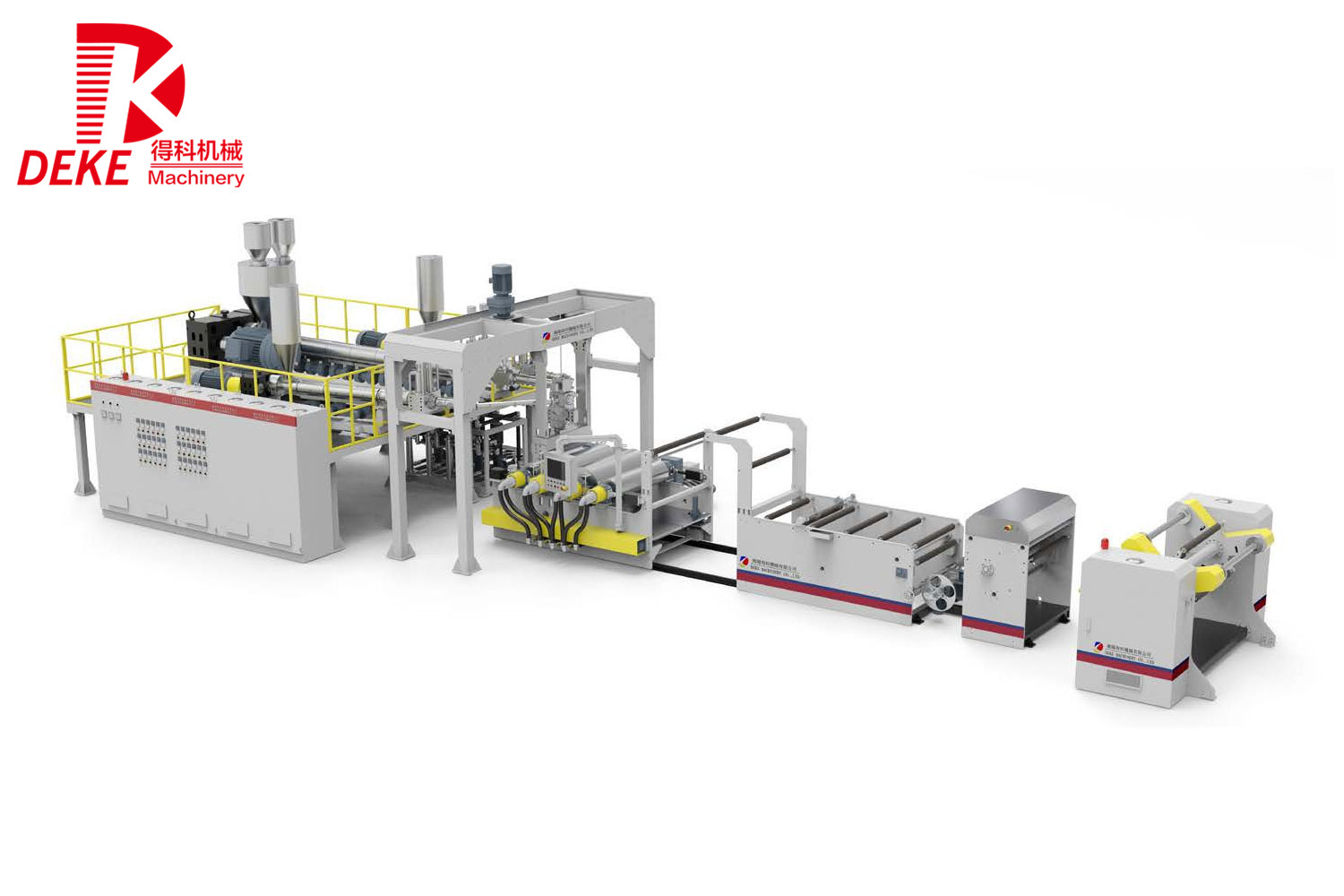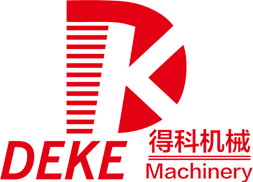What Makes EVOH a Preferred Choice in Extrusion Technology?
2025-07

What Makes EVOH a Preferred Choice in Extrusion Technology?
The world of manufacturing is constantly evolving, and with it, the materials we use to create high-quality products. One such material that has gained significant traction in the extrusion industry is **EVOH (Ethylene Vinyl Alcohol)**. This innovative polymer is celebrated for its exceptional barrier properties, making it a preferred choice for various applications, especially in the plastic processing machinery sector. In this comprehensive article, we will dive deep into the unique characteristics of EVOH, its advantages, and its applications, providing a roadmap to understanding why it stands out in extrusion technology.
Table of Contents
- 1. Understanding EVOH: Chemistry and Composition
- 2. The Benefits of EVOH in Extrusion Technology
- 3. Key Applications of EVOH
- 4. EVOH vs. Other Barrier Materials: A Comparative Analysis
- 5. Sustainability and EVOH: A Green Choice
- 6. The Extrusion Process Utilizing EVOH
- 7. The Future of EVOH in Manufacturing and Extrusion Technology
- 8. FAQs About EVOH in Extrusion Technology
- 9. Conclusion
1. Understanding EVOH: Chemistry and Composition
EVOH is a copolymer produced through the polymerization of ethylene and vinyl alcohol. Its unique structure allows for a flexible yet strong material with remarkable barrier properties against gases and moisture. The ratio of ethylene to vinyl alcohol can be adjusted during production, which significantly influences the material's properties. This tunability is one of the key reasons why **EVOH** is so versatile and widely applicable in various industries.
1.1 Key Chemical Properties of EVOH
EVOH possesses several important chemical properties:
- **Barrier Properties**: EVOH is renowned for its ability to provide excellent gas and aroma barrier properties, which is crucial for food packaging and other sensitive products.
- **Solubility**: It is soluble in alcohols, which impacts its compatibility with various formulations.
- **Thermal Stability**: EVOH maintains its properties under a wide range of temperatures, making it suitable for various processing methods.
2. The Benefits of EVOH in Extrusion Technology
Incorporating EVOH into extrusion processes brings numerous advantages that enhance product performance and longevity.
2.1 Superior Barrier Properties
The most significant benefit of EVOH is its outstanding barrier properties. It effectively prevents the permeation of gases, particularly oxygen, which is vital for preserving the freshness and shelf life of products. This characteristic is especially crucial in the food packaging sector, where maintaining product integrity is paramount.
2.2 Enhanced Product Performance
Products made with EVOH not only benefit from extended shelf life but also experience improved mechanical properties. The material is resistant to many chemicals, making it ideal for diverse applications beyond food, including pharmaceuticals and industrial products.
2.3 Customizable Characteristics
Manufacturers can tailor the properties of EVOH by adjusting the ethylene-to-vinyl alcohol ratio, allowing for a custom fit to specific application requirements. This flexibility in formulation is essential for meeting the unique needs of various industries.
3. Key Applications of EVOH
EVOH is highly versatile and finds its way into numerous applications across different sectors.
3.1 Food Packaging
The primary application of EVOH is in food packaging. It is widely used in the production of multilayer films and containers that require an excellent barrier against moisture and oxygen. This helps maintain the freshness of products, reducing waste and increasing consumer satisfaction.
3.2 Medical Applications
In the medical field, EVOH is used for packaging pharmaceuticals and medical devices. Its barrier properties ensure that sensitive products remain uncontaminated and effective throughout their shelf life.
3.3 Industrial Applications
EVOH is also utilized in various industrial applications, including coatings and adhesives. Its chemical resistance and durability make it a reliable choice for products exposed to harsh conditions.
4. EVOH vs. Other Barrier Materials: A Comparative Analysis
When evaluating barrier materials, it's essential to consider how EVOH compares to alternatives such as HDPE, PVC, and PET. Each material has its strengths and weaknesses.
4.1 EVOH vs. HDPE
While HDPE is known for its strength and durability, it lacks the excellent barrier properties of EVOH, making it less suitable for sensitive products requiring oxygen and moisture protection.
4.2 EVOH vs. PVC
PVC offers decent chemical resistance but is inferior to EVOH in terms of gas permeability. Additionally, the environmental concerns surrounding PVC production and disposal give EVOH an edge in sustainability.
4.3 EVOH vs. PET
PET is frequently used in packaging for its structural integrity and recyclability. However, when it comes to barrier properties, EVOH outperforms PET, especially in applications where oxygen control is vital.
5. Sustainability and EVOH: A Green Choice
Sustainability is a growing concern across all industries, and EVOH presents a viable solution for eco-friendly manufacturing.
5.1 Biodegradability
EVOH is not inherently biodegradable, but its use in multilayer systems can reduce the amount of plastic needed for packaging, which can ultimately lead to less waste in landfills.
5.2 Recycling Potential
EVOH's compatibility with other plastics enhances the recyclability of composite materials. Manufacturers are increasingly finding ways to recycle EVOH, which helps reduce environmental impact.
6. The Extrusion Process Utilizing EVOH
Understanding the extrusion process when utilizing EVOH is crucial for manufacturers looking to optimize their production.
6.1 Extrusion Techniques
EVOH can be processed through various extrusion techniques, including:
- **Blown Film Extrusion**: Used for creating films, ensuring even distribution of the material.
- **Cast Film Extrusion**: Suitable for producing flat films with specific properties.
- **Co-extrusion**: Integrating EVOH with other materials to create multilayer products.
6.2 Process Parameters
Key parameters such as temperature, pressure, and screw design must be optimized to achieve the desired properties in the final product. This requires close monitoring and adjustment throughout the extrusion process.
7. The Future of EVOH in Manufacturing and Extrusion Technology
As technology advances, the future of EVOH looks promising. Increased awareness of sustainability and the demand for high-performance materials are likely to drive further innovation in the use of EVOH.
7.1 Innovations in EVOH Production
Research is ongoing to improve the production methods of EVOH, focusing on enhancing its properties while reducing environmental impacts.
7.2 Expanding Applications
New applications are being explored, especially in the fields of sustainable packaging and advanced manufacturing technologies, ensuring that EVOH will continue to play a critical role in the future.
8. FAQs About EVOH in Extrusion Technology
8.1 What is EVOH primarily used for?
EVOH is primarily used in food packaging due to its superior barrier properties, but it also finds applications in medical packaging and industrial products.
8.2 How does EVOH compare to traditional plastics?
EVOH offers better barrier protection against gases and moisture compared to many traditional plastics, making it ideal for sensitive applications.
8.3 Is EVOH recyclable?
While EVOH itself is not biodegradable, it can be recycled when used in multilayer structures, contributing to a more sustainable approach to packaging.
8.4 Can EVOH be used in high-temperature applications?
Yes, EVOH exhibits thermal stability, allowing it to perform well in high-temperature environments during various processing methods.
8.5 What are the environmental impacts of using EVOH?
EVOH has a lower environmental impact compared to many traditional barrier materials, and ongoing research focuses on improving its sustainability further.
9. Conclusion
In summary, EVOH has emerged as a **preferred choice** in extrusion technology due to its outstanding barrier properties, versatility, and potential for sustainability. As manufacturing processes continue to evolve, the importance of materials like EVOH—capable of meeting the demands of modern consumers while providing exceptional performance—cannot be overstated. The future of EVOH in extrusion technology looks bright, promising enhanced applications and continued innovations that will benefit industries worldwide. By understanding the unique characteristics and advantages of EVOH, manufacturers can make informed decisions that lead to superior product quality, sustainability, and customer satisfaction.
RELATED INFORMATION
Understanding PET Sheet Extruder Machines: A Comprehensive Guide
PET sheet extruder machines are specialized equipment used in the plastic processing industry to produce sheets made from polyethylene terephthalate (PET). These machines play a crucial role in various applications, including packaging, automotive parts, and consumer goods. Understanding how these machines work, their components, and their applications can help manufacturers improve efficiency and
Exploring the Efficiency of PET Single Screw Extruders in Manufacturing
Exploring the Efficiency of PET Single Screw Extruders in Manufacturing Table of Contents 1. Introduction to PET Single Screw Extruders 2. The Importance of PET in the Manufacturing Process 3. Design and Mechanism of Single Screw Extruders 4. Efficiency Factors of PET Single Screw Extruders 5. Applications of PET Single Screw Extruders in Manufacturing 6. Maintenance and O



